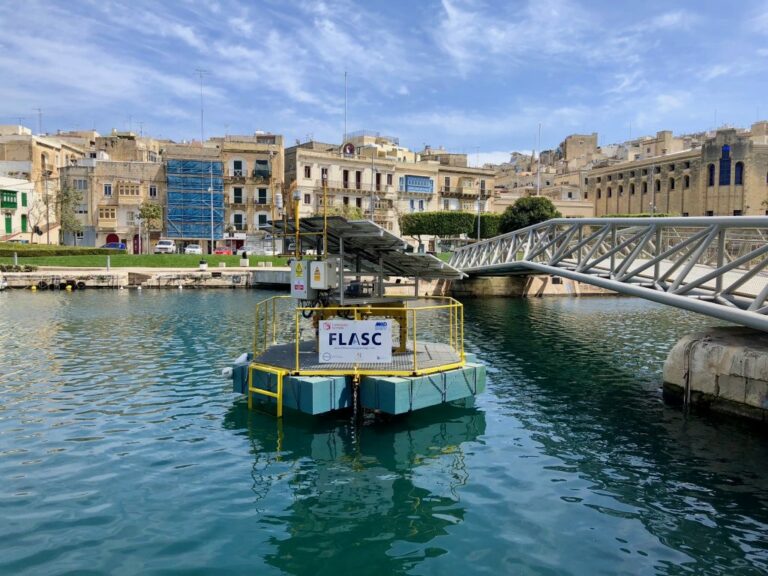FLASC sets commercialisation pathway with Subsea 7
Non-battery based offshore energy storage solutions pioneer FLASC has established a collaboration agreement with Subsea 7.

FLASC’s patented Hydro-Pneumatic Energy Storage (HPES) concept combines pressurised seawater with compressed air to create an energy storage device.
Specifically, the technology leverages existing infrastructure and supply chains, along with the marine environment itself as a natural heatsink.
The first working prototype was successfully tested in 2018.
The technology has also secured a statement of feasibility based on a technical and commercial assessment by DNV-GL.
Related Article
-
DNV GL Statement of Feasibility for FLASC Project
Research & Development
Consequently, the collaboration will aim towards the commercialisation of offshore HPES.
The parties will develop solution classes based on FLASC’s core technology, targeting a number of use-cases; from conventional grid-connected wind farm applications to decarbonisation initiatives in the offshore oil and gas sector.
The parties will also jointly pursue early-stage implementations of these solutions within Subsea 7’s upcoming and future projects.
Daniel Buhagiar, co-founder and CEO of FLASC, said:
“We truly believe that sustainable co-located energy storage will be crucial to unlocking the full potential of offshore renewables. We have seen consistently growing interest for innovations that address the unique challenges of the offshore environment.
“Through this collaboration, we look forward to accelerating our path to market, in line with the growing demands of an offshore sector in the midst of an accelerating green transition.”
Thomas Sunde, VP Strategy and Technology of Subsea 7, also said:
“We believe that cost effective and reliable industrial scale energy storage solutions are essential to unlock the promise of offshore renewables and accelerate the energy transition.
“FLASC’s Hydro-Pneumatic Energy Storage (HPES) solution is an innovative technology with significant potential, offering a competitive and more sustainable alternative to Li-ion battery farms.”









